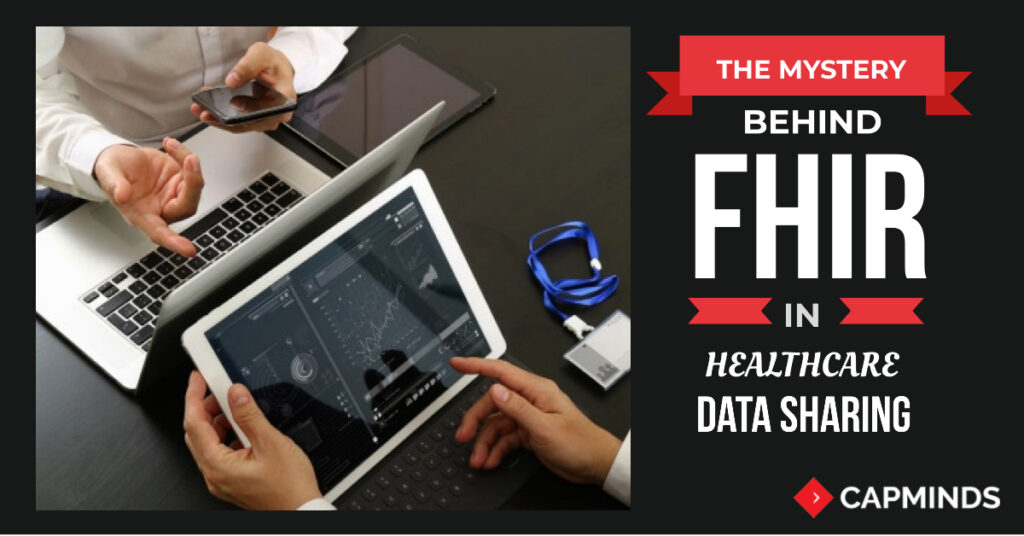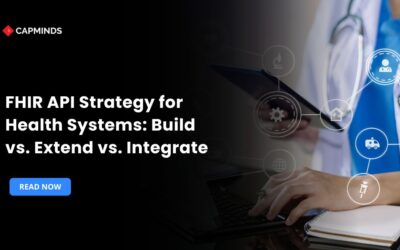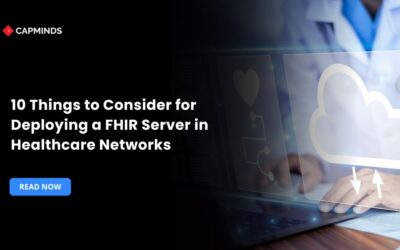The Mystery Behind FHIR In Healthcare Data Sharing
FHIR (Fast Healthcare Interoperability Resources) is an essential key component to healthcare data sharing and interoperability in modern health IT. New to FHIR? Here is all you need to know about FHIR’s challenges, benefits, and the adoption of FHIR for data sharing.
What Is Data Sharing In Healthcare?
Data sharing is defined as the process of sharing structured data via common resources or services in real-time. Collaboration through data sharing enables more dynamic information sharing for people in the healthcare sector. A simple example of such kind of information sharing is when a person/healthcare provider requests or updates information from another person/healthcare provider. This process allows multiple healthcare providers to collaborate on common information resources stored in one location, as opposed to message exchange where the same data is stored by senders and recipients of a message.
The Need For Healthcare Data Sharing
In today’s scenario, the need for healthcare data sharing across the nations is especially driven by needs related to:
• More efficient data sharing and updating of health-related information between health personnel
• Sharing of health and personal information between patient and healthcare software (for example, online patient portal)
Data sharing is typically realized through an Application Programming Interface (API). You may already be aware of APIs and their importance. The term API simply refers to an interface to a data program where specific parts of it can be activated (run) from another data program through calls to the interface.
What Is FHIR?
HL7 FHIR (Fast Healthcare Interoperability Resources) is an open standard developed to meet the growing demands in today’s healthcare market for flexible development of standard-based integrations and better support with modern technology such as mobile and cloud services.
Why FHIR Is Important?
FHIR for data sharing: When a clinical framework exposes information to regular normalized APIs, it empowers other clinical frameworks, and applications, to relate to a standard interface, regardless of which provider they use to retrieve the data. This is autonomous of whether the buyer application is inner or outer to the medical care entertainer. This is independent of whether the consumer application is internal or external to the healthcare actor.
In today’s healthcare marketplace, the available traditional standardization processes nearly take too long and are often not flexible enough. But, FHIR enables easier, faster, and especially more flexible development of interfaces that also scales well. The biggest advantage of FHIR is that it is very easy for developers to use it. But to achieve healthcare interoperability in the long term, the FHIR needs to be implemented correctly.
RELATED: FHIR: A NEW PATH TOWARDS HEALTHCARE INTEROPERABILITY
FHIR Adoption Rate For Data Sharing
As per the recent report, there is a huge interest and an increasing number of FHIR implementations for data sharing both nationally and internationally. The reason behind the increase in the FHIR adoption rate is the standard is easy to use and covers new communication needs related to data sharing ( for example mobile and cloud services technology). In countries like the US and UK, the health IT industry adopted FHIR early and has worked with the authorities to develop FHIR as a national standard for data sharing. We also see that major technology providers such as Apple, Google, Amazon, IBM, and others have gathered behind the health information exchange standard.
RELATED: WHAT IS FHIR? WHY HOSPITALS SHOULD CARE?
The Arrival Of FHIR Based Tools To Increase Interoperability
The arrival of FHIR-based technologies shows there is a smart approach to appropriately use FHIR and other different standards to increase patient data exchange and interoperability for clinical research. Most of the FHIR-based tools were designed to make care more natural, more educated, and less divided for patients. Some of the tools like healthcare planning applications, data aggregators, and patient engagement tools offered to streamline interactions with providers and administrative staff, while the clinical decision support systems offered significant experiences to clinicians at the point of care.
Advantages Of FHIR
When compared to previous data exchange standards FHIR delivers several advantages which include easy implementation and interoperability with a wider variety of systems and devices. The specialty of FHIR Is, it was designed with the ideas of web and mobile technologies by taking full advantage of RESTful architecture and open internet standards. FHIR resources are structured with XML or JSON along with the predictable URL for each resource, making them amazingly well disposed to web and mobile innovation.
Adding FHIR is a natural progression to accomplish real-time views into rapidly changing data, such as patient treatments, care delivered, admissions, and resources utilized. FHIR extends both the types of data and also the ways that data can be utilized, shown, and queried within the care coordination platform.
RELATED: DON’T MISS THIS: 9 PROVEN IMPLEMENTATION BENEFITS OF FHIR
All you need to know about FHIR Challenges with recent versions
The current FHIR version 4 has some special capabilities and includes the normative content (assured forward and backward compatibility) there are still elements of it that could change in the future. However, the evolution of FHIR has been perfectly well documented so that parties can follow its progress and its emerging growth and adapt to it as needed. While some healthcare organizations may be interested in implementing FHIR, it takes some time and effort to migrate existing systems.
FHIR is worked to be entirely adaptable to specific use cases – implying that a significant part of the information in the standard is optional. While this is useful for applications where the resource fields are not tracked or may not be important. This includes a layer of unpredictability when the information contract is being spread out between parties, since data consumers may require a portion of the optional fields for their specific use case.
RELATED: CHALLENGES IN FHIR IMPLEMENTATION – AN EYE OPENING GUIDE
Data-Driven Healthcare Via FHIR Enabled Interoperability
In today’s healthcare sector, healthcare systems are using various clinical applications from different vendors. Most of them tend to prefer flexibility with other systems. To lighten that, Fast Healthcare Interoperability Resources (FHIR®) created a set of rules on how health data is exchanged between clinical applications. It set up abilities that permit medical providers to get access to clinical healthcare data at the source of truth at the correct time in a normalized manner, setting off new chances to improve patient care. This kind of real-time access to the patient’s complete health data expands the opportunities for communication and workflow improvement.
RELATED: ROLE OF FHIR IN INTEROPERABILITY
Improve Interoperability with CapMinds HL7 FHIR services
To effectively convey medical solutions, healthcare applications should be able to share, integrate, exchange, and retrieve data between themselves. CapMinds FHIR services – we strive to improve healthcare organizations’ workplace productivity by simplifying their day-to-day operations. With HL7 FHIR your data will be available, discoverable, and understandable while maintaining structure and standardization.




